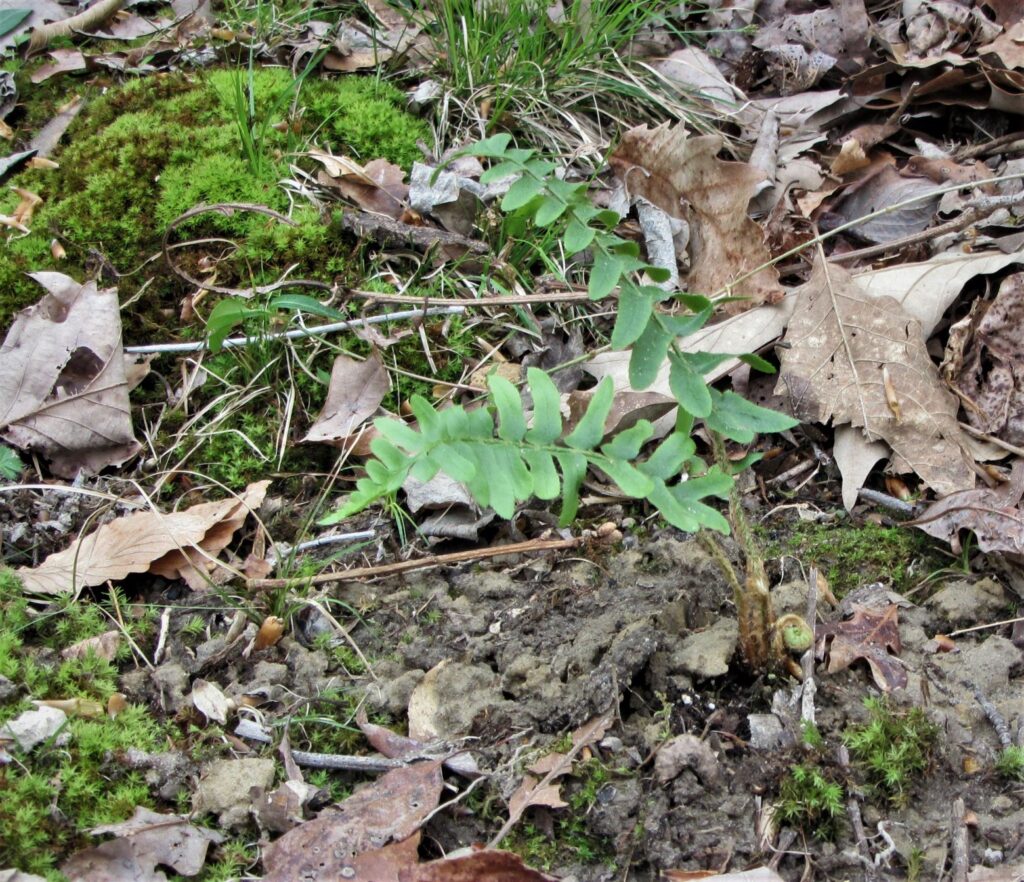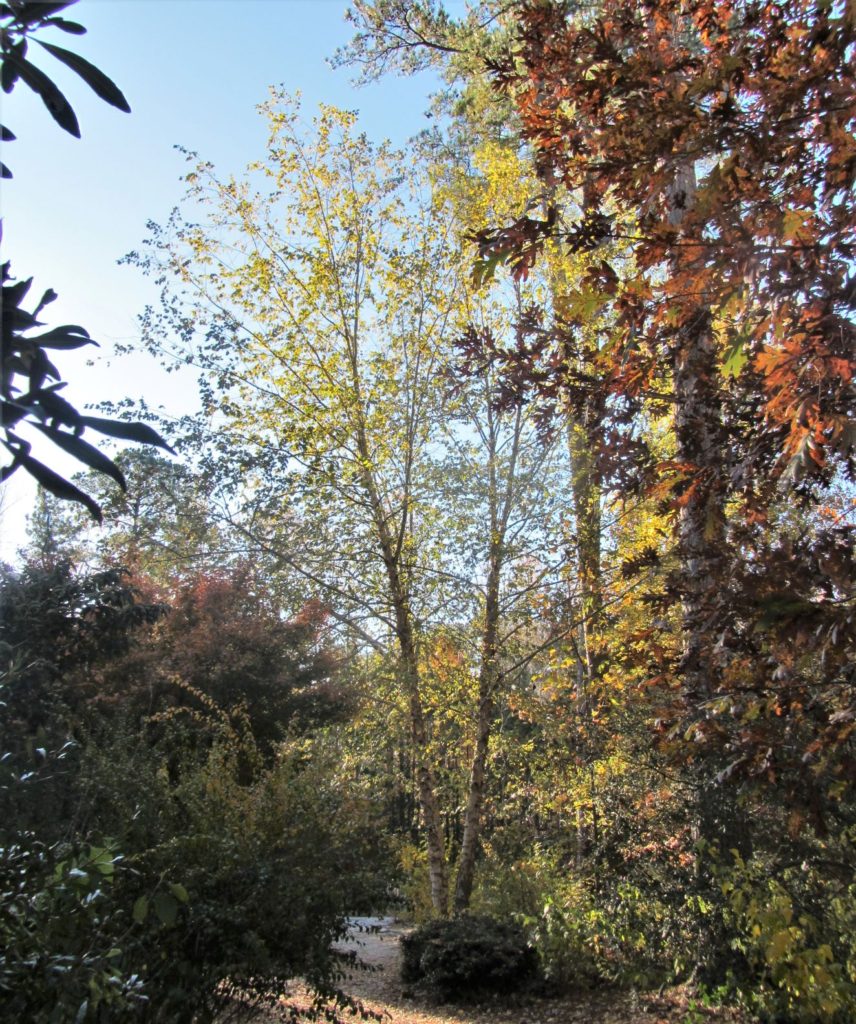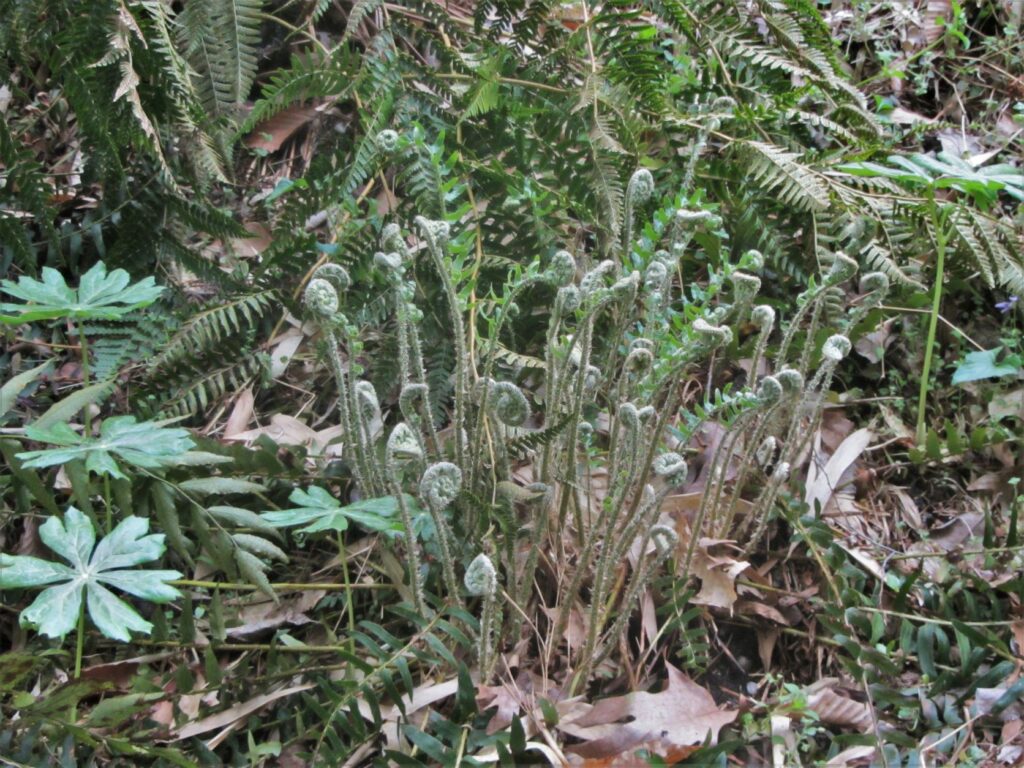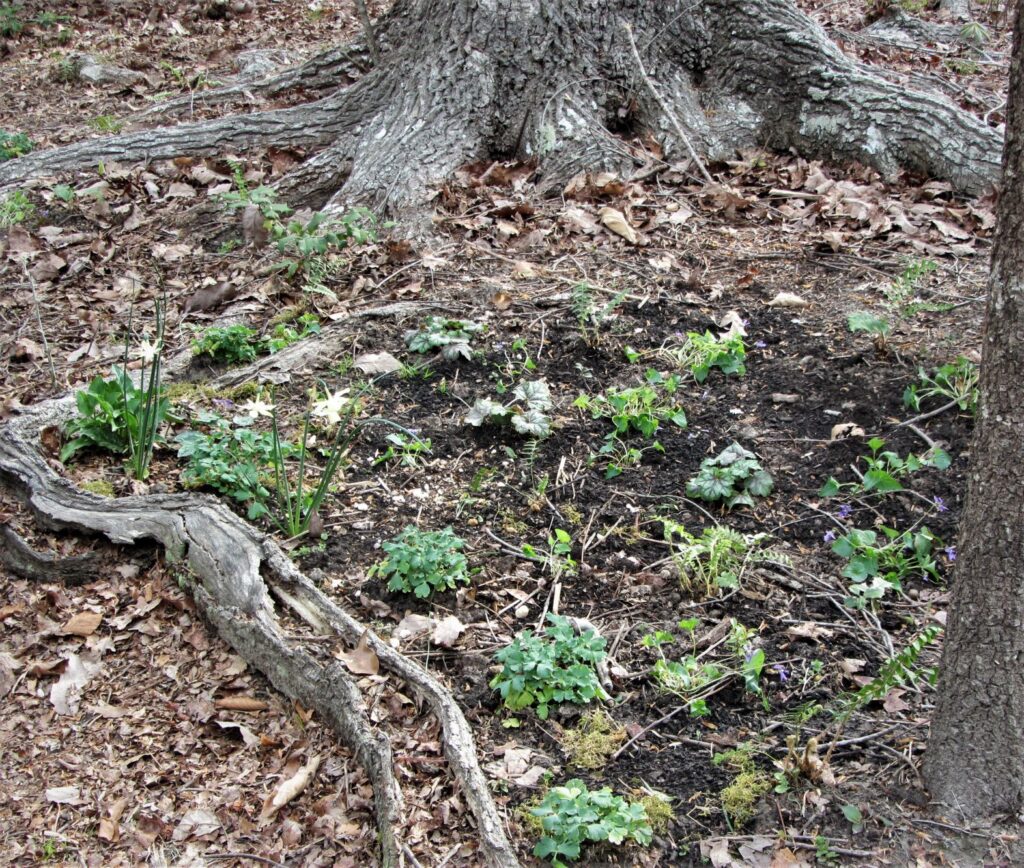Christmas Ferns: A Small Step Towards Climate Solutions
A Very Personal Challenge
As more and more of us feel the effects of chaotic weather patterns and climate change on our own communities and families, we know that waiting for governments and corporations to ‘solve’ the problem is no longer enough. We each explore ways that we can make a personal, positive difference in this very personal circumstance. Whether we worry about heat or storms, flooding or high winds, we understand that communities around the planet are also experiencing rapid and life altering changes because of the weather.
One of the major ‘greenhouse’ gasses that absorbs and traps heat in our atmosphere is carbon dioxide, which is produced by various natural and human generated processes, including burning fossil fuels. According to measurements carried out at the Hawaiian Mauna Loa observatory, at an altitude of 3400m, the ‘parts per million’ of carbon dioxide in our atmosphere has steadily increased over the period of record keeping since 1958. They measured 420.41 ppm of CO2 in the air in February of 2023. Here is a chart of recent observations at the Mauna Loa observatory.
Analysis from NOAA’s Global Monitoring Lab, indicated that the global average of atmospheric carbon dioxide was 414.72 ppm in 2021. That reading showed an increase of 2.58 ppm over readings in 2020.
Natural Solutions
Scientists have determined that natural carbon ‘sinks,’ like forests and plant life in oceans and lakes, removed approximately half of the carbon emitted each year between 2011 and 2020. The amount of carbon in the atmosphere increases each year because as we continue to emit carbon in a variety of ways, we haven’t been able to capture and sequester enough to keep our planet’s atmosphere in balance. And, every year more acres of forest, prairie, and other natural vegetation are cleared for development or monoculture farming. As we emit more carbon than we sequester each year the concentration of carbon in our atmosphere continues to increase.
This isn’t the first time that there have been large concentrations of carbon dioxide in Earth’s atmosphere. Greenhouse gasses were also dangerously high fifty-five million years ago, according to research described in the Scientific American in 2014. A team of scientists involved in an Arctic Coring Expedition in 2004 discovered evidence of atmospheric carbon above 2500 ppm from those ancient times.
Carbon levels began to drop significantly over the next million years. According to scientists analyzing those ice core samples, a tiny water fern called Azolla, that lived in nutrient rich bodies of water at that time, helped absorb enough carbon to reduce atmospheric carbon levels. Azolla still lives and grows across much of our planet today, thriving in as little as an inch of water. Canadian researchers have ongoing experiments in growing Azolla to absorb carbon while creating a new food source for livestock, and perhaps people. It is nutritious. Carbon levels continued to drop in Earth’s atmosphere over the next several million years as plant life evolved and flourished.
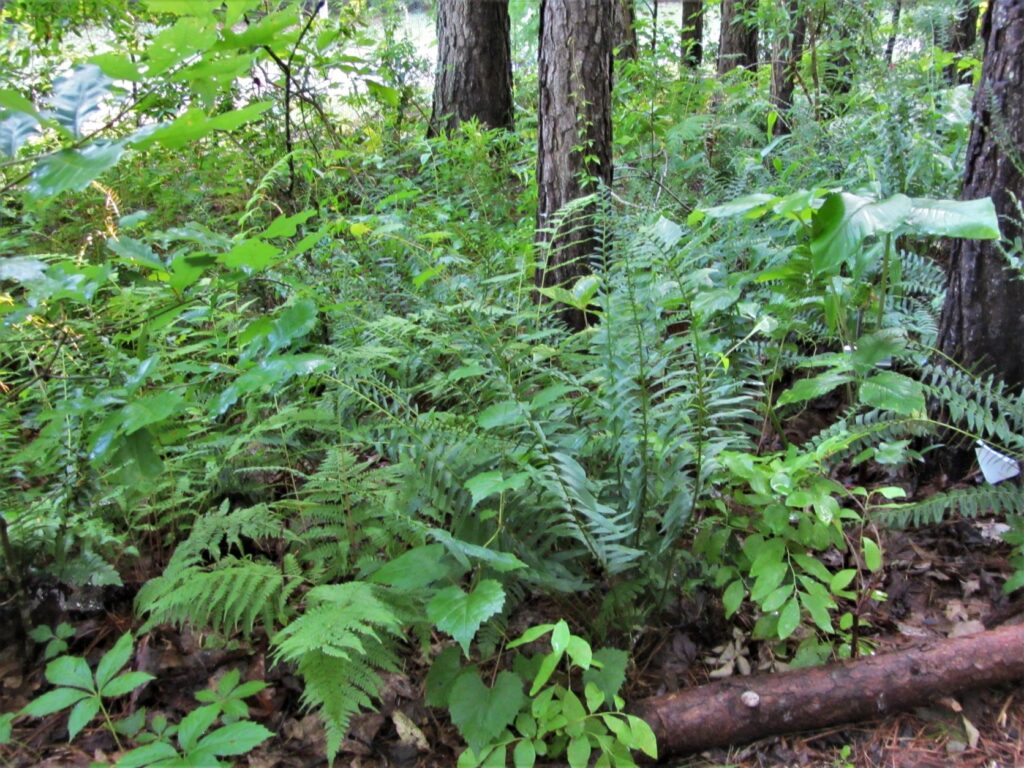
Christmas ferns carpet wooded areas of the WIlliamsburg Botanical Garden and Freedom Park Arboretum.
Restoration and Reforestation
All of us who enjoy gardening are a part of the solution to this climate challenge. We know that plants absorb and sequester enormous amounts of carbon dioxide, which they use for their own respiration and carbohydrate production. Carbon is deposited in wood, leaves and roots as cellulose. The Nature Conservancy’s director of forest carbon science, Bronson Griscom, has long believed that nature itself is a significant factor in the solution to climate change. According to Griscom, “We tend to think of nature as a victim, but there’s been less attention to the phenomenal resilience and power of nature to heal. The ability of nature to solve problems just doesn’t get enough attention.”
The Nature Conservancy, along with many other conservation groups, corporations and governments have made reforestation a major focus of their efforts to capture and sequester carbon, thus ‘offsetting’ carbon emissions from human activities. For a while now, the best advice to an individual wanting to make a positive difference on this front, and perhaps offset some of their own carbon emissions, has been to ”Go plant a tree.” The University of Minnesota Extension offered a Woodland Carbon Capture Challenge to determine exactly how much carbon a single tree or wooded area could capture in a year. See their results for 2021, and a description of their project here.
Planting and caring for trees to mitigate carbon isn’t bad advice, so far as it goes. Even if we aren’t in a position to plant a new tree every year, we can contribute to charitable organizations involved in reforestation. Groups like Arbor Day and The Nature Conservancy emphasize forest restoration after logging and natural disasters.
Smaller Scale Solutions
But small stories show up in our news feed from time to time describing the effectiveness of smaller efforts. All plants absorb and sequester carbon, not just trees. Though a single tree might be able to absorb and sequester hundreds of pounds of carbon each year, smaller plants like shrubs, succulents perennials and ferns play their part, too.
Consider the tiny Azolla fern, which grows on water and captures carbon in biomass, much like algae does. In quantity, even tiny plants absorb significant amounts of carbon. As they die, the carbon in their leaves, stems and roots is returned to the soil, where it remains until the soil is disturbed.
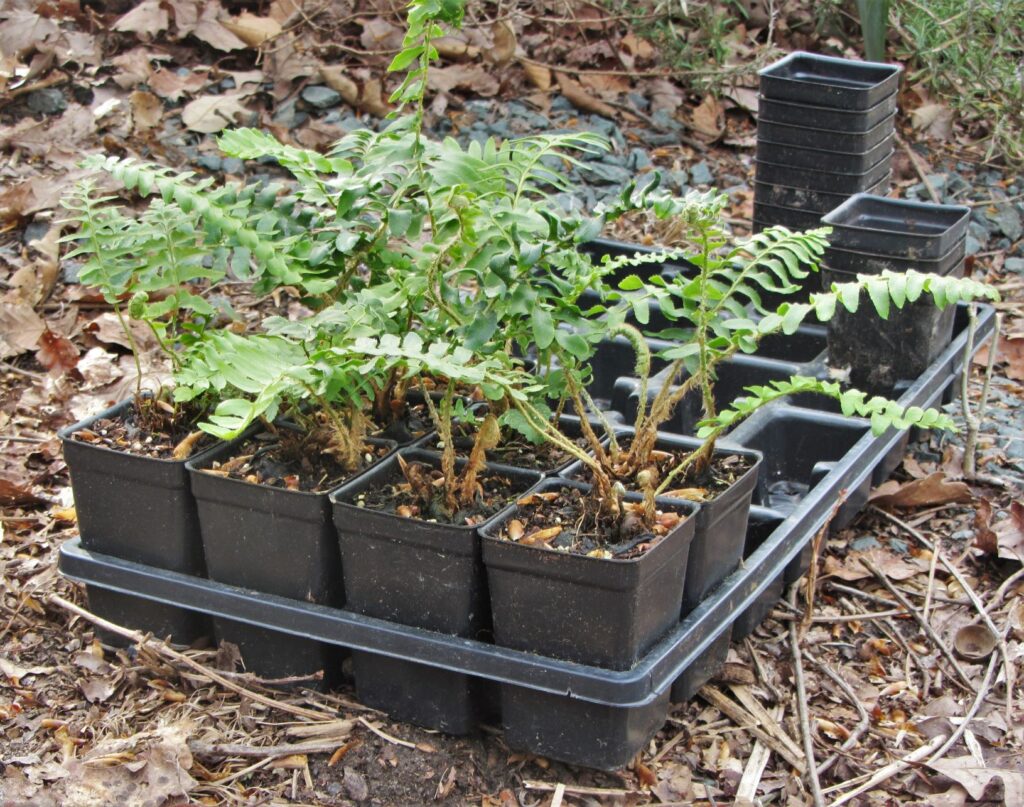
A flat of 32 2″ plug Christmas ferns from Homestead Garden Center won’t be enough to plant all of the areas I intend to plant in ferns this spring. These are only available by special order at this time.
For those of us who don’t have room to plant another tree, or perhaps don’t have room in a small yard to plant any tree, we can still have a positive impact by planting other, smaller, evergreen plants. Evergreen plants continue to absorb and sequester carbon throughout the year, even while deciduous trees take a rest in the winter.
Environmental Restoration Using Native Ferns
The native Christmas fern, Polystichum acrostichoides, is an excellent choice for small scale restoration and carbon sequestration in residential areas. If you take a drive through the Virginia woods on a winter day, you may notice tufts of Christmas fern glowing in the winter sunlight.
Christmas fern grows in deep shade to partial sun and is highly drought tolerant once established. Each plant grows as a vase-shaped clump, 1’-3’ tall. It grows from a rhizome, which expands the clump over time. But it doesn’t run and send up new clumps nearby as several other ferns may do. Space fern plugs at least 18″-24″ apart for a good, solid ground cover in three years.
The Christmas fern grows on a variety of soil types, from thin gravelly soil on the sides of mountains to rich, swampy soils here near the coast. Though it prefers acidic to neutral soil, it is tolerant of soil chemistry. It will grow beside brick foundations and other masonry. It produces a large root system and is effective to prevent erosion. Small birds find shelter under its fronds and pick the furry scale like hairs near the bottom of each frond to line their nests. Best of all, Christmas fern requires no fertilizer or other chemical inputs to thrive. It will only need watering during a summer drought.
After admiring native, naturalized Christmas ferns growing along the Colonial Parkway this past winter, I decided to add a significant planting of them to the ground layer of my own wooded garden. Christmas ferns have been available bare root from online nurseries in previous years, but I didn’t find a good source for them this year until I spoke with the staff at Homestead Garden Center. They always offer quart sized Christmas ferns, as do numerous other local garden centers. But they were able to order plugs in 2” pots. I wanted the plugs to minimize disruption to the root systems of the trees I was planting them near. These plugs are still available by special order, to anyone willing to buy the entire flat of 32 plugs.
Any evergreen fern will perform the same functions of sequestering carbon, and other pollutants from the air, and covering the ground. They help prevent erosion while keeping carbon from passing from the soil back into the atmosphere. Other large, evergreen ferns also provide shelter to small birds and other animals.

Mix Christmas ferns with other perennials to absorb and sequester even more carbon while providing shelter and nectar for wildlife.
Good choices for our area include Dryopteris erythrosora, the autumn fern, and the Asian Polystichum polyblepharum, or Korean tassel fern. Both are widely available in local nurseries. Even evergreen shrubs, Hellebores, and ground cover vines will capture and sequester carbon throughout the year. They all have a role to play. I decided to choose a native fern already common and naturalized in our area to enhance my woodland garden, while also making a positive environmental impact.
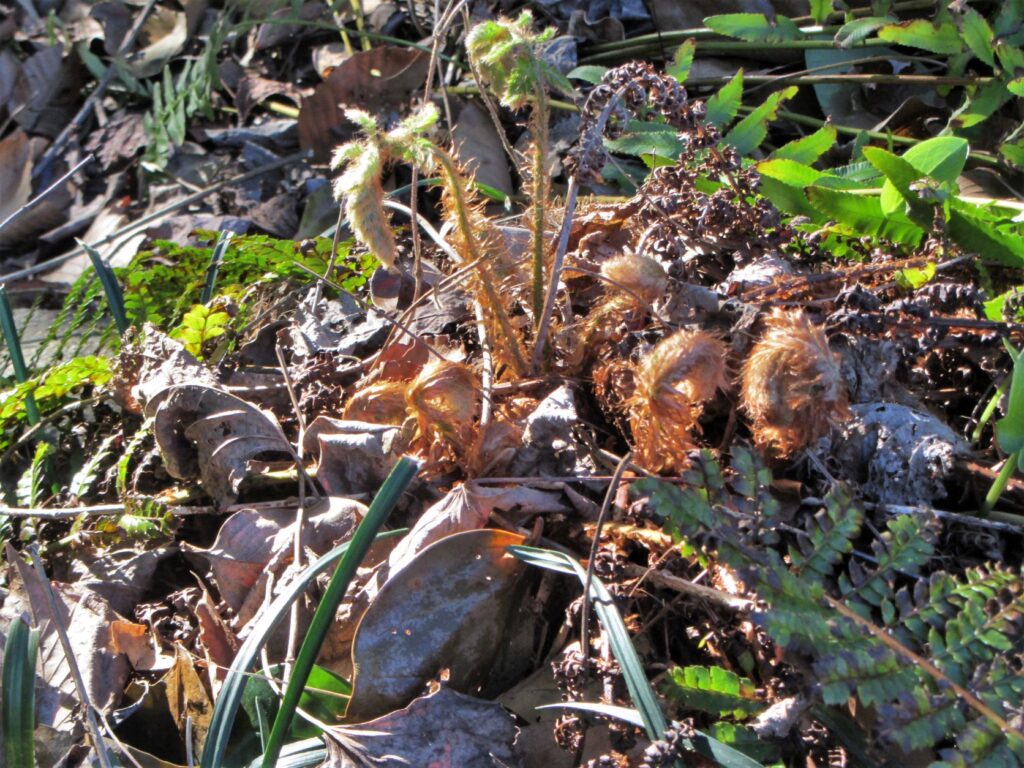
Polystichum polyblypherum, Korean tassel fern emerging in late March, also has tiny scale like hairs on its stems
Making Changes, Beginning Now
When presented with a challenge like a warming climate and the dramatic weather patterns resulting from it, we need to bring all of our creative thinking and dedicated effort to the table. None of us can wait for someone else to ‘solve the problem.’ We all need to begin now, where we are, with whatever resources we have, to make our own personal best effort to help meet the challenges of our times. If that means planting a single plant in a pot by our own back door, that is a first step in the direction of creating positive change.
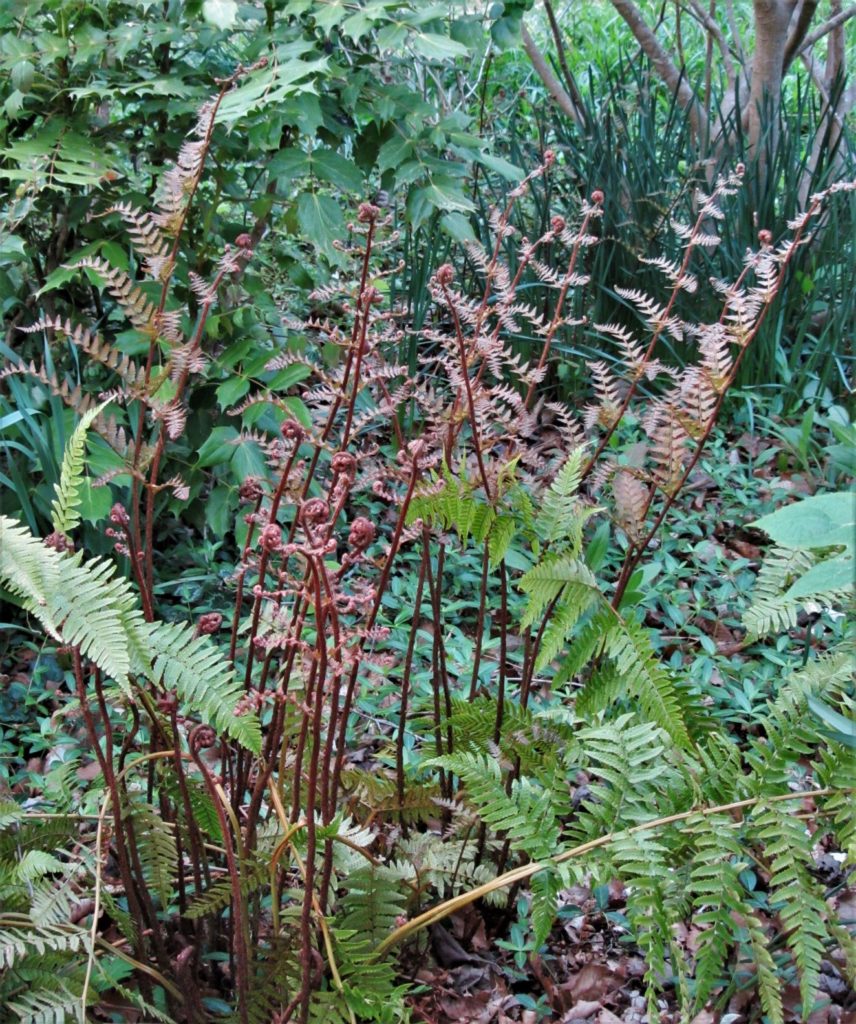
Dryopteris erythrosora ‘Brilliance,’ remains evergreen and grows in a neat, expanding clump. It is another excellent choice in our area.
All Photos by Elizabeth McCoy, Master Gardener Tree Steward

